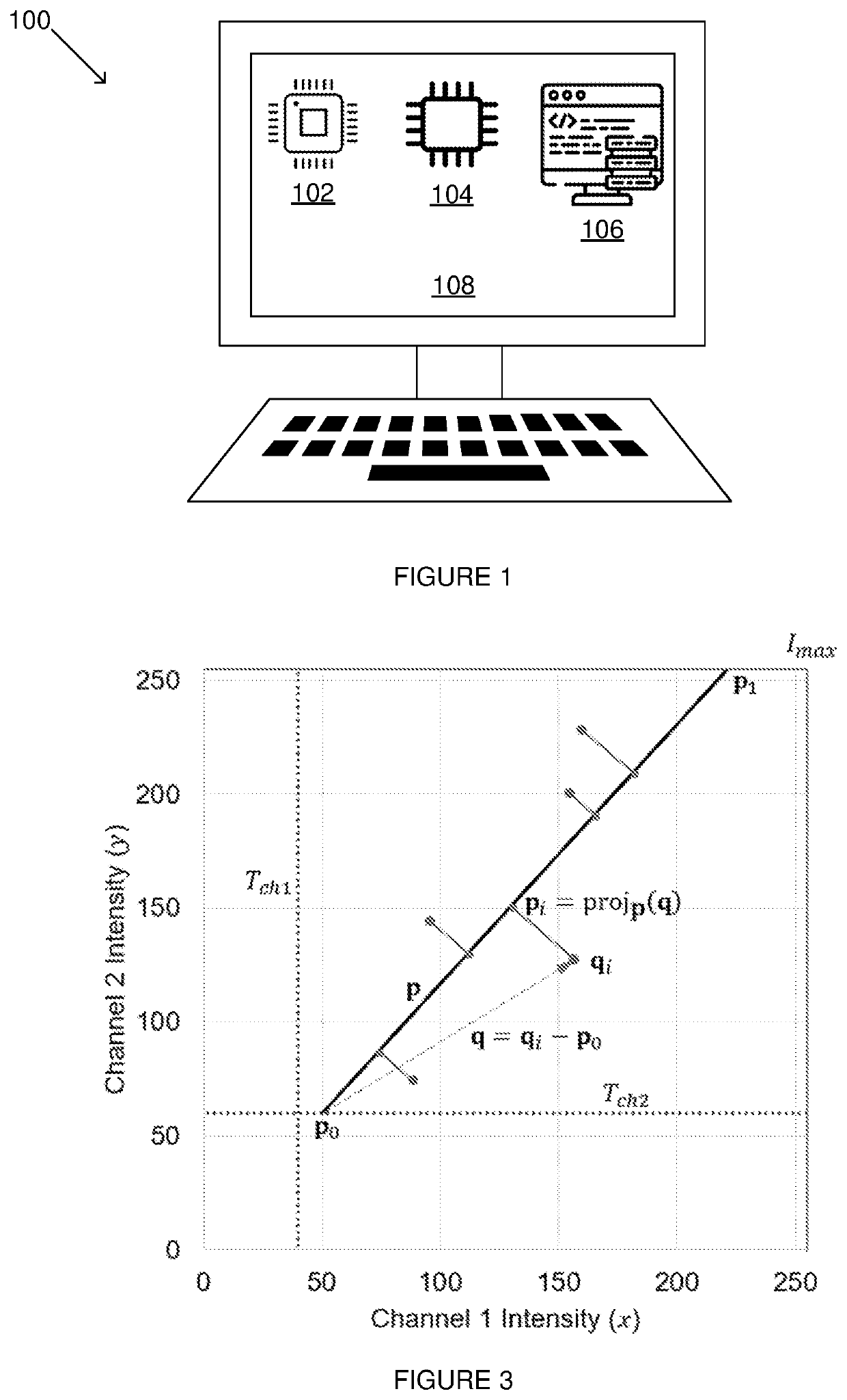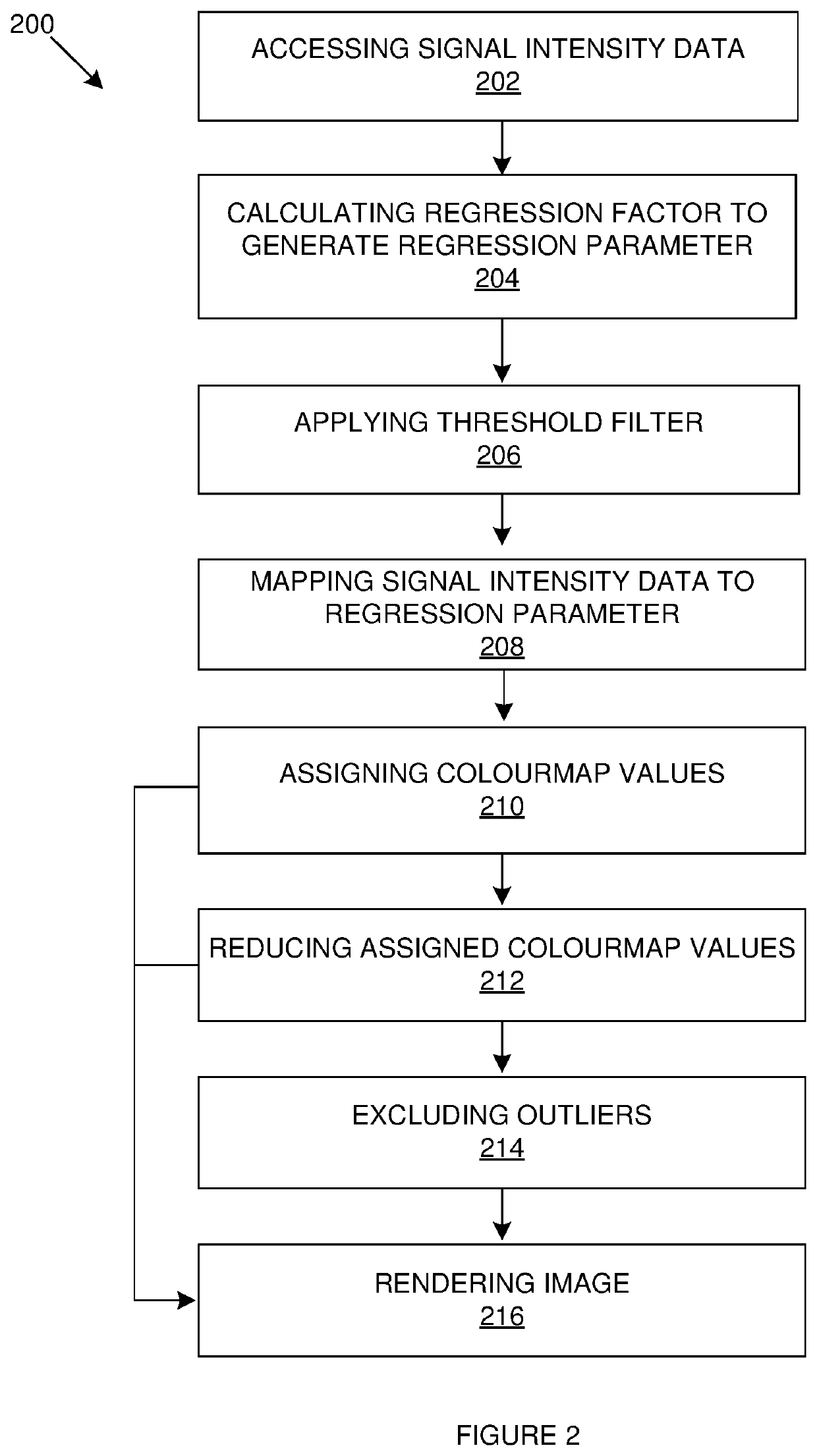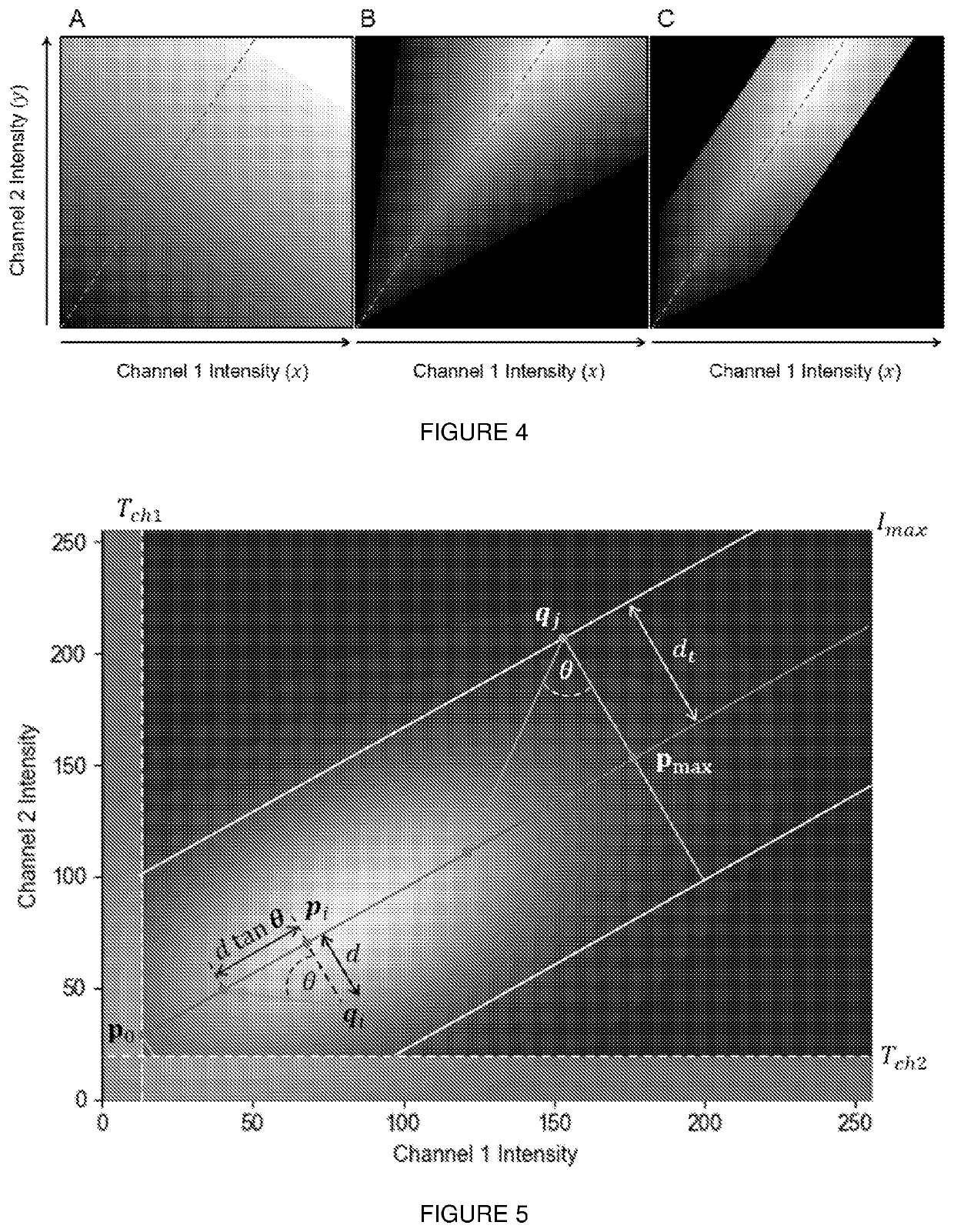Method and system for visualising colocalised fluorescence signals
a fluorescence signal and colocalisation technology, applied in the field of me and system for visualising colocalised fluorescence signals, can solve the problems of inconvenient interpretation of visualisation, inability to convey spatial information, and work undertaken
- Summary
- Abstract
- Description
- Claims
- Application Information
AI Technical Summary
Benefits of technology
Problems solved by technology
Method used
Image
Examples
examples
[0083]In the following examples, the method and system is applied and validated by visualising colocalisation in both synthetically generated data as well as in three distinct biological samples.
[0084]This demonstrates the advantages offered by the method and system of the present disclosure. In the first biological sample the colocalisation between α / β tubulin and acetylated tubulin is visualised. In the second and third samples the colocalisation between two organelles and between an organelle and tubulin are respectively visualised. In the third example, the fused state between lysosomes and autophagosomes and between autophagosomes and tubulin are investigated. Due to the small size of the organelles and the fineness of the filamentous tubulin structures, it is commonly challenging to accurately investigate the degree of colocalisation between them. These structures were therefore deliberately chosen to demonstrate the performance of the present method and system in challenging ...
PUM
 Login to View More
Login to View More Abstract
Description
Claims
Application Information
 Login to View More
Login to View More - R&D
- Intellectual Property
- Life Sciences
- Materials
- Tech Scout
- Unparalleled Data Quality
- Higher Quality Content
- 60% Fewer Hallucinations
Browse by: Latest US Patents, China's latest patents, Technical Efficacy Thesaurus, Application Domain, Technology Topic, Popular Technical Reports.
© 2025 PatSnap. All rights reserved.Legal|Privacy policy|Modern Slavery Act Transparency Statement|Sitemap|About US| Contact US: help@patsnap.com



